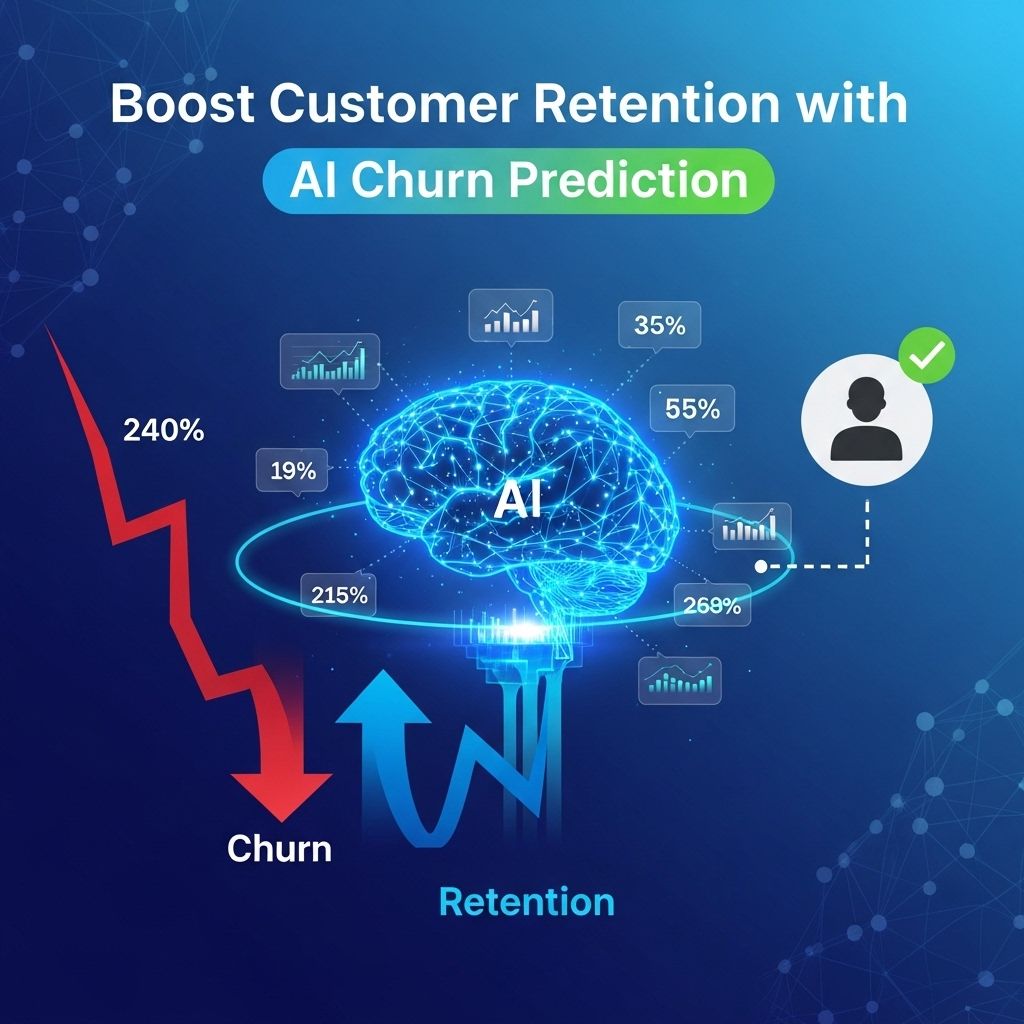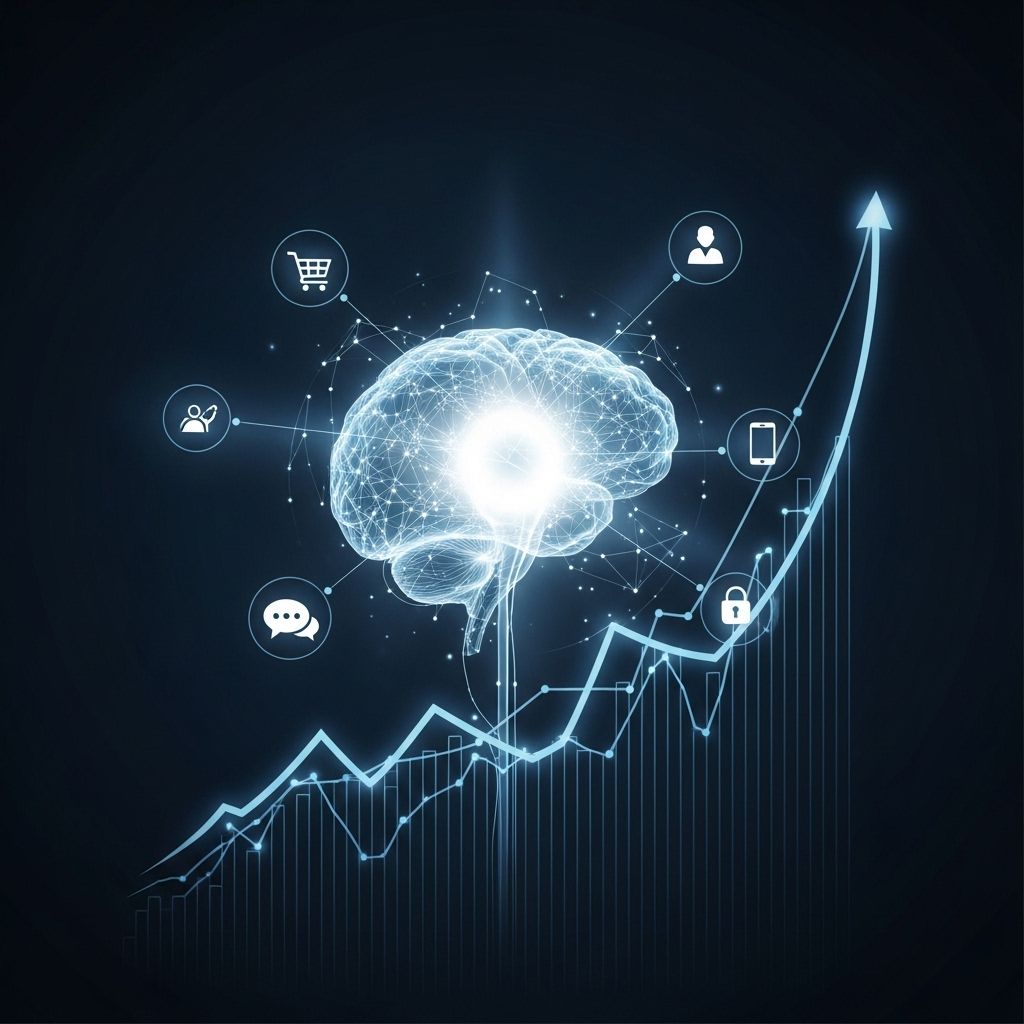Boost Customer Retention with AI Churn Prediction
Discover how AI-driven churn prediction can enhance customer retention and improve your business strategy effectively.

In today’s dynamic business landscape, retaining customers is as crucial as acquiring new ones. With the advent of Artificial Intelligence (AI), businesses can now leverage technology to predict customer churn effectively. Understanding why customers leave and what can be done to prevent it is a game changer for organizations aiming for longevity and success. This article delves into AI-driven churn prediction, exploring its mechanisms, benefits, and implementation strategies.
Table of Contents
Understanding Customer Churn
Customer churn, often referred to as customer attrition, denotes the phenomenon where customers discontinue their relationship with a business or brand. High churn rates can severely impact a company’s profitability and growth. It is essential to understand the different types of churn:
- Voluntary Churn: Customers decide to leave for reasons such as dissatisfaction, better alternatives, or price points.
- Involuntary Churn: Customers may leave due to circumstances outside their control, such as financial issues or changes in their personal situation.
- Passive Churn: Customers who are still using a service but have reduced their engagement or spending.
The Role of AI in Churn Prediction
AI has transformed the way businesses analyze customer data and predict churn. By leveraging machine learning algorithms and big data, companies can identify patterns and trends that may signal a potential churn. Here’s how AI facilitates churn prediction:
Data Collection and Analysis
AI systems aggregate data from various sources, including:
- Customer purchase history
- Engagement metrics (like app usage or website visits)
- Customer support interactions
- Demographic data
Predictive Modeling
Using historical data, AI models can predict future customer behavior. Commonly used techniques include:
- Regression Analysis: Used to identify relationships between customer characteristics and their likelihood of churning.
- Decision Trees: These models help visualize the decision process of customers, allowing businesses to understand churn factors easily.
- Neural Networks: These complex models can recognize intricate patterns in massive datasets, making highly accurate predictions.
Real-time Monitoring
AI systems can monitor customer behavior in real-time, enabling businesses to respond promptly to potential churn signals. This capability ensures that companies can take proactive measures.
Benefits of AI-Driven Churn Prediction
Implementing AI-driven churn prediction offers numerous advantages:
| Benefit | Description |
|---|---|
| Improved Customer Insights | AI analytics provide deeper understanding of customer preferences and behaviors. |
| Personalized Marketing | Companies can tailor marketing strategies based on customer segments identified through AI predictions. |
| Cost Efficiency | By retaining more customers, businesses can reduce the costs associated with acquiring new customers. |
| Proactive Engagement | Predictive insights allow for timely interventions with at-risk customers. |
Strategies for Implementing AI Churn Prediction
To harness the power of AI in churn prediction, businesses can follow these key strategies:
1. Define Objectives Clearly
Before implementation, it’s crucial to set clear goals. Focus on specific KPIs such as:
- Customer Lifetime Value (CLV)
- Churn Rate
- Net Promoter Score (NPS)
2. Choose the Right Tools
Select AI tools and platforms that align with your business needs. Popular AI solutions include:
- Salesforce Einstein
- IBM Watson
- Google AI
3. Invest in Data Quality
Quality data is paramount. Ensure that customer data is clean, relevant, and up-to-date. Techniques to maintain data quality include:
- Regular data audits
- Data validation checks
- Standardization of data entry processes
4. Train Your Team
Equipping your team with the necessary skills is vital for successful adoption. Consider ongoing training in:
- Data analysis techniques
- Machine learning fundamentals
- Customer relationship management tools
Case Studies: Success Stories
Several companies have successfully implemented AI churn prediction strategies, resulting in substantial improvements in customer retention. Here are a few examples:
Telecom Industry
A major telecom provider utilized AI to analyze customer usage patterns and predict churn. By identifying high-risk accounts, the company implemented targeted retention campaigns, reducing their churn rate by 15% within a year.
E-commerce
An online retailer employed predictive analytics to segment customers based on shopping habits. By offering personalized discounts to likely churn customers, they saw a 20% increase in retention during promotional periods.
Subscription Services
A subscription-based streaming service integrated AI to monitor user engagement. When users exhibited decreased activity, the company reached out with re-engagement campaigns, leading to a 30% decrease in churn rates over six months.
Future Trends in AI Churn Prediction
As technology continues to evolve, so will churn prediction methodologies. Key trends to watch include:
- Enhanced Personalization: AI will enable even more tailored customer experiences, reducing churn by addressing individual needs.
- Integration of AI with IoT: Internet of Things (IoT) devices will provide real-time data, enhancing predictive capabilities.
- Ethical AI Practices: As businesses leverage AI, a greater focus on ethical data usage and transparency will emerge.
Conclusion
In the competitive business environment, harnessing AI for churn prediction can significantly boost customer retention, ultimately driving growth and profitability. By understanding customer behavior, predicting potential churn, and implementing effective strategies, organizations can create lasting relationships with their customers. The journey to mastering AI in churn prediction may be complex, but the rewards are undeniably worth the effort.
FAQ
What is AI churn prediction?
AI churn prediction is a data-driven approach that utilizes artificial intelligence algorithms to analyze customer behavior and identify patterns that indicate a likelihood of customers discontinuing their service or product.
How can AI churn prediction help boost customer retention?
By identifying at-risk customers early, businesses can implement targeted retention strategies, such as personalized offers or improved customer support, to keep them engaged and satisfied.
What types of data are used in AI churn prediction?
AI churn prediction models typically use a variety of data sources, including customer demographics, transaction history, engagement metrics, and feedback to assess churn risk.
Is AI churn prediction suitable for all industries?
Yes, AI churn prediction can be applied across various industries, including retail, telecommunications, SaaS, and subscription services, to enhance customer retention efforts.
What are some common methods for implementing AI churn prediction?
Common methods include machine learning models like logistic regression, decision trees, and neural networks, which are trained on historical customer data to predict future churn.
Can small businesses benefit from AI churn prediction?
Absolutely! Small businesses can leverage AI churn prediction tools to optimize customer retention strategies, improve customer experience, and ultimately drive growth.


